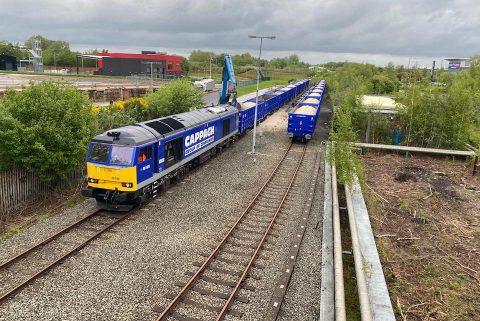Continued pandemic support to reach 2030 goals, will that work?

Pandemic support for the railway industry in the form of adjusted track access charges could be a longer-term measure to support the modal shift to rail. The European Commission is currently looking into a more permanent measure that could help achieve the goal to run 30 per cent of all cargo on rails by the end of the decade.
Do you want to read the full article?
Thank you for visiting RailFreight.com. Become a member of RailFreight Premium and get full access to all our premium content.
Are you already a member?
Having problems logging in? Call +31(0)10 280 1000 or send an email to customerdesk@promedia.nl.





